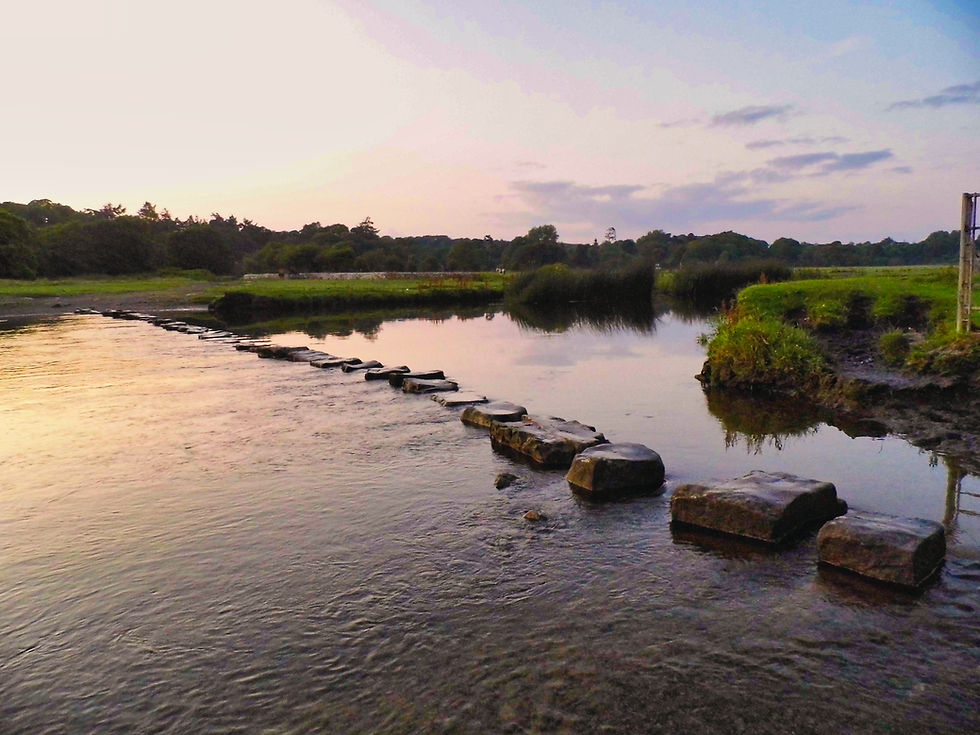How Houseplants Can Make Us Happier In Our Homes
- Emily

- Nov 5, 2019
- 3 min read
Updated: Jan 10, 2022

How does it feel when you walk into a room with healthy, thriving houseplants or freshly cut flowers? Is it a welcoming breath of fresh air, or trendy millennial clutter you could just do without?
The Benefits
Plants purify the air we breathe. Aside from the basic rebalancing of oxygen and carbon dioxide, several plant species also effectively reduce toxins in the air. The proliferation of man-made materials and fabrics means that we are exposed to far more chemicals than previous generations ever were. Plants like the Dragon Tree and English Ivy can pull these unnatural substances out of the air we breathe and into the soil, where they are neutralised.

Having green plants in the room can also help to maintain a healthy level of humidity in the air. The water we provide is used by the plant and then released into the air, counteracting the dry air which is almost inevitable in the winter when we use heating. If your room is too humid or struggling with damp, then a Peace Lily can work in the opposite way and absorb airborne mould.
As well as physically altering the air we're living in, there are many claims about the positive impacts of plants on mental health.
Being connected to nature is regarded by many as a basic human need; but many offices, schools and homes can become quite detached from the outside world. Studies have shown improved recovery speeds for patients with plants and flower in their rooms, and workplaces report an increase in productivity when a windowless office becomes populated with plants.
Responsibility Required
There's the old joke about 'not even being able to keep a houseplant alive', but when it comes to caring for them, there are a few tips and tricks that can help.
From time to time, it's a good idea to clean your houseplant's leaves to get rid of any dust or build up that could be blocking the plant's ability to photosynthesise. You can either 'wash' the whole plant under a gently running shower or tap; or you can wipe the leaves with a warm, damp cloth.
Another rookie error is to choose a pot without any drainage holes. One thing that a lot of plants hate is sitting in a pool of water, and this can easily happen in the bottom of a water-tight pot. A pot-inside-a-pot or a little dish for drainage is the best way to be able to see if you are over or under watering.
You may also have to experiment a little bit with locations for your plants and flowers, as drafty windowsills or darker corners will suit some species better than others. If they seem like they're struggling and you can't work out why, then look up which plants are hardier and which need particular conditions.
I've put together a list of five houseplants that would be a good start to your collection:
Favourite Five
Peace Lily: These beauties are excellent at purifying the air and absorbing excess moisture. Mine hasn't actually flowered in a very long time, but the luscious green foliage means I am quite content with my bedside plant.
Rubber Plant: These are large in size and have distinctive, dark shiny leaves. I normally prefer the look of leafy, fern-y type plants but the rubber plant serves as an excellent contrast if you're building up an in-house jungle display.
Cacti: Some people absolutely love cactus, and even dress them up in little wooly hats. I do not. They're far too spiky for my liking, but I'll include them as an option because that only seems fair...
Lavender: I know, I thought it was just for outside too! Apparently lavender can grow indoors providing it gets enough sunlight and isn't over-watered. For that gorgous smell, it's got to be worth a try: I'll be bringing mine inside immediately!
Snake Plant: These are distinctive and striking, and also pretty tough to kill! I've not actually bought one yet because they always seem a little more expensive than other similar options - but apparently they can last for years given the right growing conditions, so may be a worthy investment.












